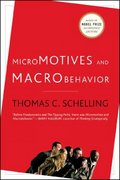Question
Question 1 What is meant by the informal sector in the labor force? A) A work environment that is highly professional but has limited opportunities
Question 1 What is meant by the informal sector in the labor force? A) A work environment that is highly professional but has limited opportunities for advancement. B) A work environment where people have limited skills and limited responsibilities. C) A work environment where the majority of the people are self-employed with no formal ties to any one company. D) A work environment where jobs have low pay, little if any social benefits, and limited rights for the workers.
Question 2 Which of the following statements best describes the difference between the labor market in Europe and the labor market in the US? A) The labor market in Europe is closely tied to unions but they are declining in power, whereas the strength of labor unions are increasing in the US. B) The labor problem in Europe has been one of creating more jobs, while in the US it has been one of creating better jobs. C) The labor market in Europe has created more jobs for its younger, more highly educated workers while losing jobs for its older workers; in the US, there are more opportunities for older workers than younger workers. D) The labor problem in Europe is more closely tied to creating better social benefits for workers, while the labor problem in the US is tied to increasing wages for all workers.
Question 3 Underemployment is best described as a) individuals working in low-income or low skilled positions. b) individuals actively seeking jobs in low-income or low-skilled positions. individuals working in jobs below their relative skills and effort level. individuals who only work part-time jobs.
Question 4 Hidden unemployment is also known as a) individuals who are actively seeking employment. b) individuals who work in the underground economy performing illegal activities. individuals who are underemployed. c) individuals who are discouraged workers.
Question 5 Which of the following is an example of "featherbedding"? a) A profession increases the standards and requirements necessary to be certified in that field. b) A politician recommends friends or supporters to work for a government agency. c) A government agency hires more people than are actually needed in order to increase its budgetary demands. d) A business decides to increase wagers for its top performers.
Question 6 Which of the following statements about the current status of migration around the world is FALSE? a) Migration from rural to urban areas is a phenomenon found more often in advanced, developed economies than in developing countries. b) Rural-urban migration is expected to contribute to the increase in urban population from 29 percent of world population in 1950 to 68 percent in 2050. c) More than half a billion people are estimated to have migrated from rural to urban areas in developing countries over the past 25 years d) Migration from rural to urban environments is a huge phenomenon, involving millions of people every year.
Question 7 When rural migrant workers face adversity and move to urban areas to seek employment, a) it can increase wages in the informal job market. b) it tends to increase wages for all workers, with the greatest increase for those in low skilled positions. c) it can be detrimental to urban workers, especially those in lower income, lower skilled jobs. d) it tends to have little or no impact on urban employment.
Question 8 Your authors identify three factors needed for long-term poverty reduction strategies. Which of the following is NOT one of the requirements they identified? a) Cash transfers to ensure equitable distribution of income, creating a livable wage for the poor and the vulnerable non-poor. b) Social protection programs for the vulnerable non-poor, creating greater resilience from potential financial pitfalls. c) Social assistance programs for the poor, creating greater equity and opportunities. d) Income-generation programs for the poor, creating opportunities for future job skills and employment.
Question 9 What is the primary purpose of targeted social programs? a) To help recipients better manage their personal resources b) To ensure the right people with specifically identified problems receive the right program c) To reduce the overall cost of delivering social programs d) To generate greater life-long assets and personal skills for all individuals living in poverty
Question 10 Social programs using cash transfers are considered to be less expensive to implement than other forms of social programs. Which of the following is NOT one of those reasons? a) Cash transfers allow program managers to identify the exact needs of the recipients. b) Cash transfers help broaden the overall benefits for all recipients c) Cash transfers allow recipients to use their money in ways they are needed d) The use of technology to deliver cash transfers helps reduce fraud, corruption, and other similar problems.
Step by Step Solution
There are 3 Steps involved in it
Step: 1

Get Instant Access to Expert-Tailored Solutions
See step-by-step solutions with expert insights and AI powered tools for academic success
Step: 2

Step: 3

Ace Your Homework with AI
Get the answers you need in no time with our AI-driven, step-by-step assistance
Get Started


